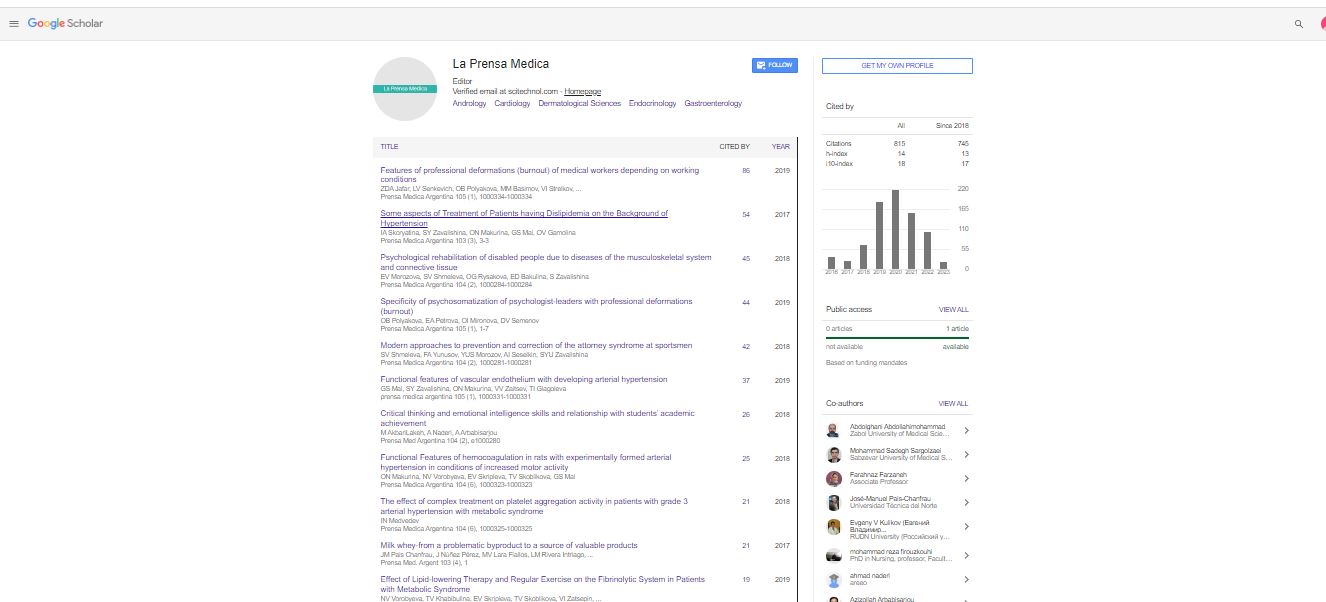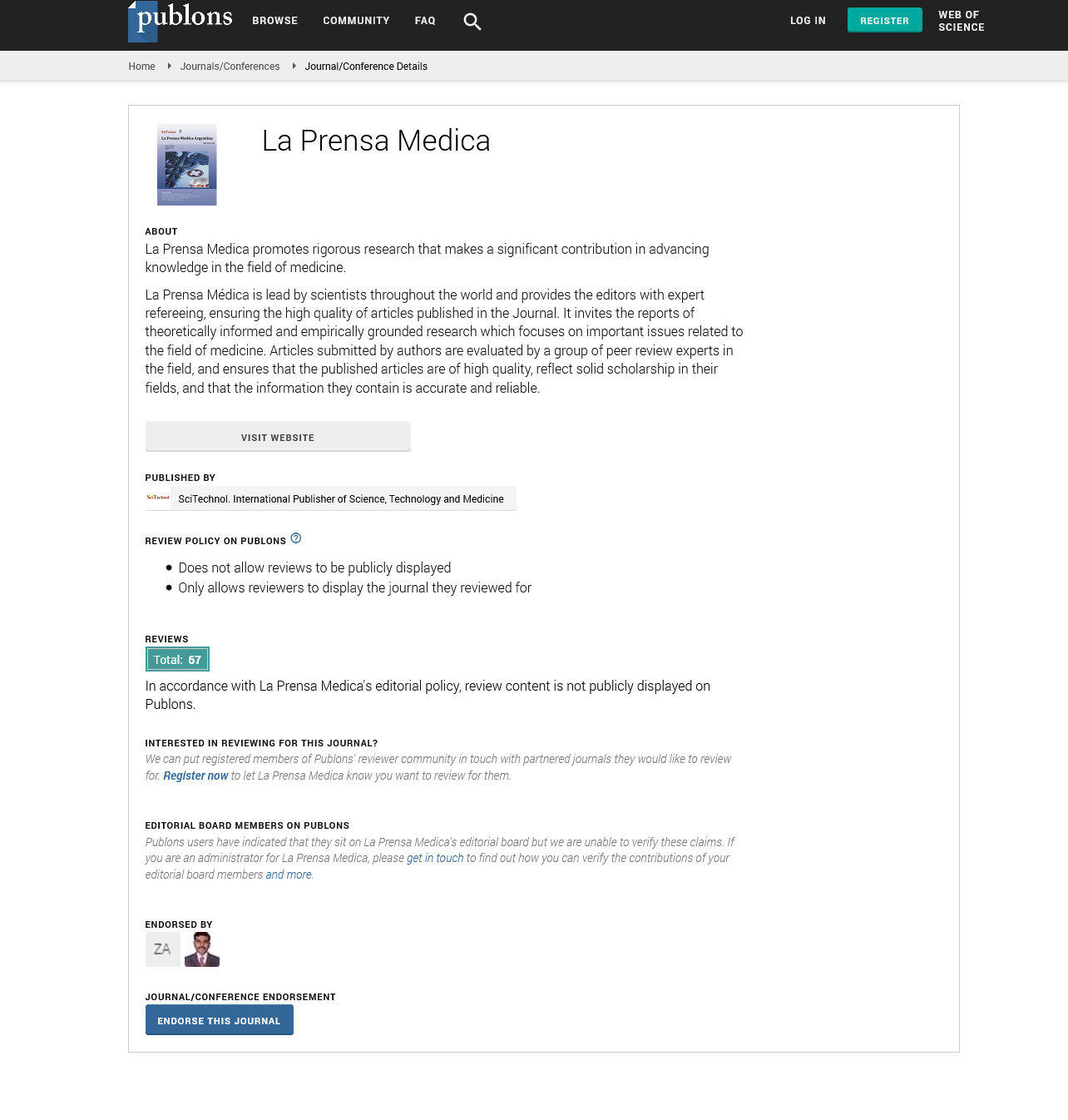Short Communication, La Prensa Medica Vol: 109 Issue: 2
Beyond Blood: Genetic Variants and Clinical Heterogeneity in Thalassemia
Aaqib Alshammari*
1Chest Medicine Unit, Department of Internal Medicine, Royal Hospital, Muscat, Sultanate of Oman
*Corresponding Author: Aaqib Alshammari,
Chest Medicine Unit, Department of
Internal Medicine, Royal Hospital, Muscat, Sultanate of Oman
E-mail: alshammari143@hotmail.com
Received date: 25 April, 2023, Manuscript No. LPMA-23-102749;
Editor assigned date: 27 April, 2023, PreQC No. LPMA-23-102749(PQ);
Reviewed date: 12 May, 2023, QC No. LPMA-23-102749;
Revised date: 19 May, 2023, Manuscript No. LPMA-23-102749(R);
Published date: 26 May, 2023, DOI: 10.4172/0032-745X.1000163
Citation: Alshammari A (2023) Beyond Blood: Genetic Variants and Clinical Heterogeneity in Thalassemia. La Prensa Medica 109:2.
Abstract
Description
Thalassemia is a group of inherited blood disorders in which the protein haemoglobin, which transports oxygen in red blood cells, is not produced properly or at all. Recent research has shed light on the genetic variants and clinical heterogeneity that are present within thalassemia syndromes, despite the fact that thalassemia is primarily associated with globin chain synthesis abnormalities. The various genetic variants that contribute to thalassemia and the clinical heterogeneity that results from them are examined in this study, highlighting the implications for the diagnosis, prognosis, and treatment of this complicated disorder.
Thalassemia is caused by mutations or deletions in the genes that make globin chains, specifically the genes that make alpha or beta globin. Thalassemia's severity and clinical manifestations are determined by the type and location of these genetic variants. Based on the nature of the mutations in the beta globin gene, for instance, beta-thalassemia is divided into various subtypes. A variety of mild to severe clinical phenotypes can result from these variants' effects on beta globin protein stability, transcription, mRNA processing, and translation.
The clinical heterogeneity of thalassemia emerges from the interaction of hereditary variations, quality modifiers, and ecological variables. Even among people with identical genetic mutations, the severity of thalassemia can vary greatly. The clinical presentation is influenced by the type and combination of mutations, co-inheritance of other hemoglobinopathies, and the presence of genetic modifiers. Also, ecological elements like iron over-burden, diseases, and coinciding ailments add to the changeability in side effects and entanglements saw in thalassemia patients.
Accurate diagnosis requires an understanding of the genetic variants and clinical heterogeneity of thalassemia. The ability to identify specific genetic variants associated with thalassemia has improved as a result of advancements in molecular genetic techniques, such as DNA sequencing and methods for detecting mutations. The diagnosis can be confirmed, the severity of the disease can be predicted, and genetic counselling for those affected and their families can be made easier with the precise identification of these variants. When determining a patient's thalassemia's prognosis, clinical variation and genetic variants play an important role. Optimizing management strategies necessitates accurately predicting disease progression, complications, and treatment response. Risk stratification and therapeutic decisions, such as the necessity of regular blood transfusions, iron chelation therapy, and potential curative options like stem cell transplantation, are guided by genetic testing in conjunction with a comprehensive clinical evaluation. Optimizing patient outcomes necessitates tailoring management strategies to the particular genetic variants and clinical heterogeneity of thalassemia. The goal of individualized treatment plans is to reduce symptoms, reduce the risk of complications, and enhance quality of life.
Conclusion
Thalassemia management typically entails regular blood transfusions, iron chelation therapy to control iron overload, and supportive care. Hematopoietic stem cell transplantation, for example, may be a curative option for some patient. The understanding of thalassemia and its clinical heterogeneity continues to grow thanks to technological and genetic advancements. New targeted therapies, gene therapy strategies, and genetic modifiers all hold hope for more precise and efficient treatments. To unravel the complex genetic variants and clinical manifestations of thalassemia and develop personalized treatments for affected individuals, collaborative efforts involving clinicians, researchers, and geneticists are essential. Thalassemia's complexity is made clear by the numerous genetic variants and clinical variation that are observed. Accurate diagnosis, prognostic evaluations, and customized management plans that ultimately improve the lives of thalassemia patients necessitate an understanding of the genetic underpinnings and clinical variability.
 Spanish
Spanish  Chinese
Chinese  Russian
Russian  German
German  French
French  Japanese
Japanese  Portuguese
Portuguese  Hindi
Hindi 

